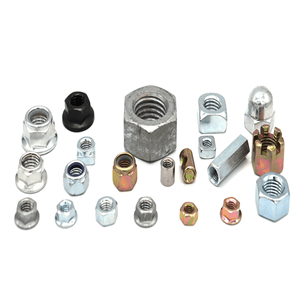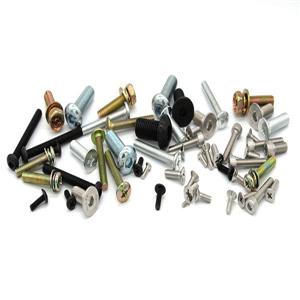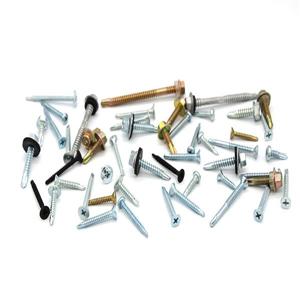Materials for fastener production: differences between 304, 304L, 316 and 316L
Stainless steel: resistant to weakly corrosive media such as air, steam and water, or stainless steel. The commonly used steel types are 304, 304L, 316, and 316L, which are 300 series steels of austenitic stainless steel.

Why do stainless steels have different grades?
During the smelting process of stainless steel, due to the different types of alloy elements added, the amount of different types is different. Its characteristics are also different. In order to distinguish them, different steel grades are crowned. The following is a table of the "alloy element" content of different steel grades of common decorative stainless steels for reference only:
Chemical composition (mass fraction,%)

- 304 stainless steel -
Performance introduction
304 stainless steel is the most common steel type. As a widely used steel, it has good corrosion resistance, heat resistance, low temperature strength and mechanical properties; good hot workability such as stamping and bending, no heat treatment and hardening (non-magnetic , Then use the temperature -196 ℃ ~ 800 ℃).
Scope of application
Household products (Category 1, 2 tableware, cabinets, indoor plumbing, water heaters, boilers, bathtubs)
Auto parts (windshield wiper, muffler, molded products)
Medical appliances, building materials, chemicals, food industry, agriculture, marine parts
-304L stainless steel-
(L is low carbon)
Performance introduction
As a low-carbon 304 steel, under normal conditions, its corrosion resistance is similar to that of 304, but after welding or stress relief, its resistance to grain boundary corrosion is excellent; it can also maintain good performance without heat treatment Corrosion resistance, use temperature -196 ℃ ~ 800 ℃.
Scope of application
Used in chemical, coal, and petroleum industry outdoor open-air machines with high requirements for resistance to grain boundary corrosion, heat-resistant parts for building materials and parts with difficult heat treatment.
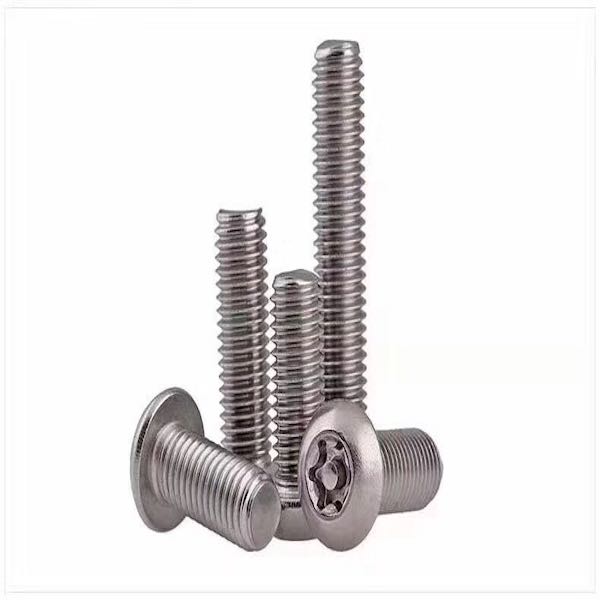
-316 stainless steel-
Performance introduction
Because 316 stainless steel is added with molybdenum, its corrosion resistance, atmospheric corrosion resistance and high-temperature strength are particularly good, which can be used under harsh conditions; excellent work hardening (non-magnetic).
Scope of application
Equipment used in seawater, chemical, dye, papermaking, oxalic acid, fertilizer and other production equipment; photographs, food industry, facilities in coastal areas, ropes, CD rods, bolts, nuts.
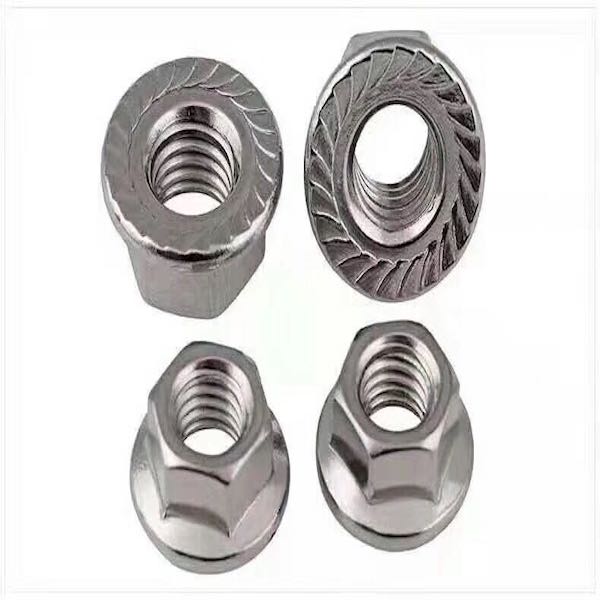
-316L stainless steel-
(L is low carbon)
Performance introduction
As a low carbon series of 316 steel, in addition to the same characteristics as 316 steel, its resistance to grain boundary corrosion is excellent.
Scope of application
Products with special requirements for resistance to grain boundary corrosion.
Performance comparison
Chemical composition
316 and 316L stainless steels are molybdenum-containing stainless steels. The content of molybdenum in 316L stainless steel is slightly higher than that of 316 stainless steel. Due to the molybdenum in steel, the overall performance of this steel is better than 310 and 304 stainless steel. Stainless steel has a wide range of uses. 316 stainless steel also has good chloride erosion properties, so it is usually used in marine environments. The maximum carbon content of 316L stainless steel is 0.03, which can be used in applications that cannot be annealed after welding and require maximum corrosion resistance.
Corrosion resistance
316 stainless steel has better corrosion resistance than 304 stainless steel, and has good corrosion resistance in the production process of pulp and paper. And 316 stainless steel is also resistant to marine and aggressive industrial atmospheres.
Generally speaking, 304 stainless steel and 316 stainless steel have little difference in chemical resistance, but they are different in some specific media.
The first stainless steel developed was 304. In certain cases, this material is more sensitive to Pitting Corrosion. An additional 2-3% molybdenum can reduce this sensitivity, and 316 is born. In addition, these additional molybdenum can reduce the corrosion of certain hot organic acids.
316 stainless steel has almost become the standard material for the food and beverage industry. Due to a worldwide shortage of molybdenum and more nickel in 316 stainless steel, 316 stainless steel is more expensive than 304 stainless steel.
Pitting corrosion is a phenomenon mainly caused by the deposition corrosion on the surface of stainless steel, which is due to the lack of oxygen to form a protective layer of chromium oxide.
Especially in small valves, the possibility of deposits on the valve plate is very small, so pitting is rare.
In various types of water medium (distilled water, drinking water, river water, boiler water, seawater, etc.), the corrosion resistance of 304 stainless steel is almost the same as that of 316 stainless steel, unless the chloride ion content in the medium is very high, at this time 316 stainless steel will more suitable.
In most cases, the corrosion resistance of 304 stainless steel is not much different from that of 316 stainless steel, but in some cases it may be very different, which requires specific analysis. Generally speaking, the valve user should know the material, because they will choose the material of the container and pipe according to the condition of the medium, and it is not recommended to recommend the material to the user.
Heat resistance
In intermittent use below 1600 degrees and continuous use below 1700 degrees, 316 stainless steel has good oxidation resistance. In the range of 800-1575 degrees, it is best not to continuously act on 316 stainless steel, but when continuously using 316 stainless steel outside this temperature range, the stainless steel has good heat resistance. 316L stainless steel has better resistance to carbide precipitation than 316 stainless steel, and can be used in the above temperature range.
Heat treatment
Anneal in the temperature range of 1850-2050 degrees, then quickly anneal, then quickly cool. 316 stainless steel cannot be hardened by heat treatment.
welding
316 stainless steel has good welding performance. All standard welding methods can be used for welding. When welding, you can use 316Cb, 316L, or 309Cb stainless steel filler rods or electrodes to weld according to the purpose. In order to obtain the best corrosion resistance, the welded section of 316 stainless steel requires post-weld annealing. If 316L stainless steel is used, post-weld annealing is not required.
Mechanical behavior
Of all steels, the austenitic stainless steel has the lowest yield point. Therefore, from the perspective of mechanical properties, austenitic stainless steel is not the best material for the valve stem, because to ensure a certain strength, the diameter of the valve stem will increase. The yield point cannot be increased by heat treatment, but can be increased by cold forming.
magnetic
Due to the wide application of austenitic stainless steel, people have the false impression that all stainless steels are non-magnetic. For austenitic stainless steel, it can basically be understood as non-magnetic, and it is true of hardened forged steel. However, the 304 processed by cold forming is somewhat magnetic. For cast steel, it is not magnetic if it is 100% austenitic stainless steel.
Low carbon type stainless steel
The corrosion resistance of austenitic stainless steel comes from the chromium oxide protective layer formed on the metal surface. If the material is heated to 450 ° C to 900 ° C, the structure of the material will change, and chromium carbides will form along the edges of the crystal. In this way, a protective layer of chromium oxide cannot be formed at the edge of the crystal, which results in a reduction in corrosion resistance. This corrosion is called "intergranular corrosion".
As a result, 304L stainless steel and 316L stainless steel were developed to combat this corrosion. 304L stainless steel and 316L stainless steel have lower carbon content. Because the carbon content is reduced, chromium carbide is not generated and intergranular corrosion is not generated.
It should be noted that higher intergranular corrosion sensitivity does not mean that non-low-carbon materials are more susceptible to corrosion. This sensitivity is also higher in high-chlorine environments.
Please note that this phenomenon is due to high temperature (450 ℃ -900 ℃). Welding is usually the direct cause of this temperature. For soft seated conventional butterfly valves, because we do not perform welding operations on the valve plate, the use of low carbon stainless steel does not make much sense, but most specifications will require 304L stainless steel or 316L stainless steel
Why does stainless steel rust
Why is stainless steel rusty? When brown rust spots (spots) appear on the surface of stainless steel pipes, people are surprised: "Stainless steel is not rusty, rust is not stainless steel, it may be a problem with the steel." In fact, this is a one-sided wrong view of lack of understanding of stainless steel. Stainless steel will also rust under certain conditions.
Stainless steel has the ability to resist atmospheric oxidation—that is, stainless steel—and also the ability to corrode in media containing acids, alkalis, and salts—that is, corrosion resistance. However, the size of its corrosion resistance varies with the chemical composition of the steel itself, the state of protection, the conditions of use, and the type of environmental medium. For example, 304 steel pipe has absolutely excellent rust resistance in a dry and clean atmosphere, but it will be rusted quickly when it is moved to the seashore area in sea fog containing a large amount of salt. good. Therefore, it is not any kind of stainless steel, which can be resistant to corrosion and rust under any environment.


